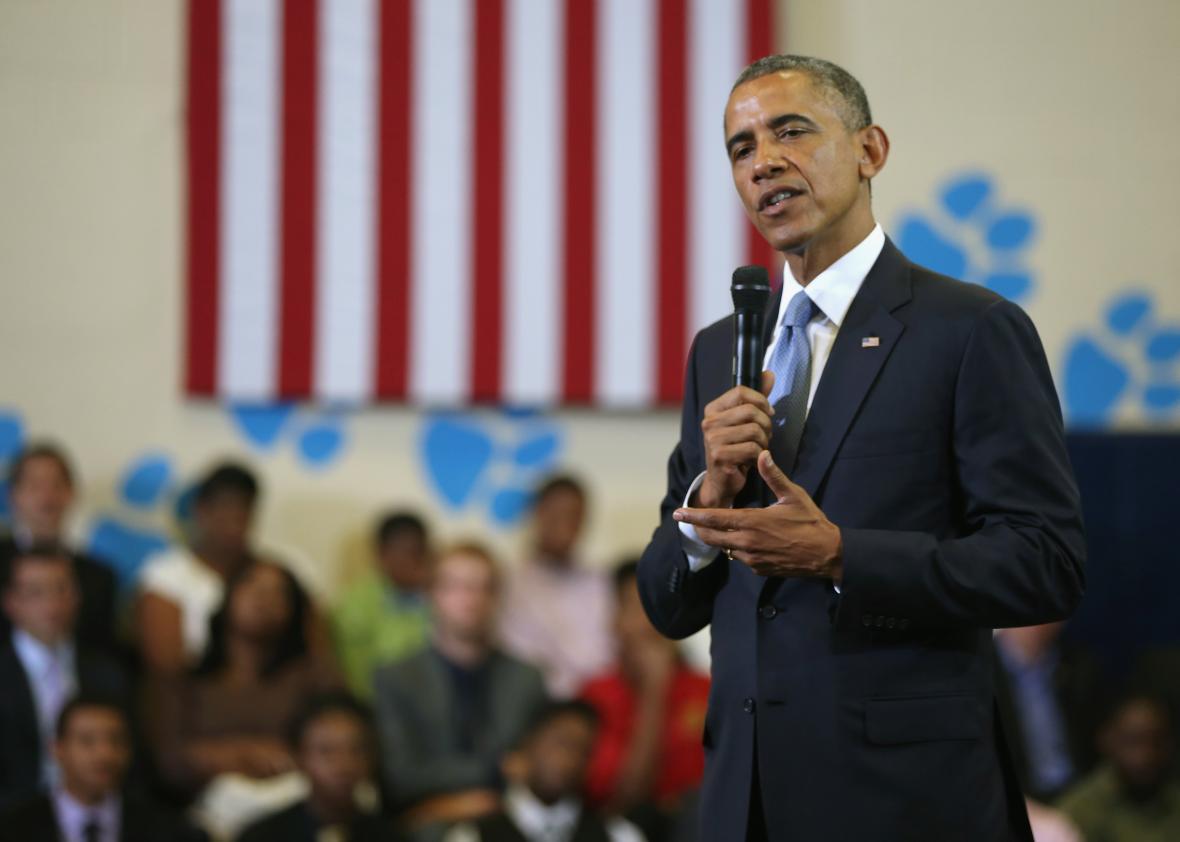The Obama administration announced two joint initiatives on Friday that it hopes will lower rates of chronic absenteeism, a problem that affects an estimated 7 million students. In New York City, 79 percent of children in the juvenile justice system had records of chronic absenteeism—typically defined as missing 10 percent or more of school days—prior to getting arrested. And consider this incredible statistic: Half of the high needs students who miss a month or more of school—at least 3 million children—live in just 65 school districts. That’s out of upward of 10,000 school districts nationwide.
Chronic absenteeism is a major issue in American education, one that’s often correlated with low academic achievement and dropping out of school altogether. The good news is that it may not be intractable, particularly since it’s concentrated in relatively few communities. Research indicates that mentors, particularly when they are school-based, can help students improve their attendance records and act as powerful liaisons to both families and schools. A report on the results of a New York City program piloted over three years in 100 schools found that chronically absent kids who were paired with mentors were 52 percent more likely to remain in school the following year than students without mentors.
The administration’s efforts to fight absenteeism come on the heels of recommendations from President Obama’s My Brother’s Keeper program, aimed at providing support to young men of color. The new plan has two components. First, the My Brother’s Keeper “Success Mentors” initiative, run in partnership with Johns Hopkins University, will pair 1 million middle- and high-school students with mentors over the next three to five years. The kids, all living in high-needs districts in 10 initial participating cities (including major urban centers like Philadelphia and New York, along with Austin, Texas; Providence, Rhode Island; Denver; and others) will meet three times weekly with their adult mentors. The mentors will be coaches, educators, AmeriCorps members, tutors, even security guards. All will be in some way connected to schools.
The second part of the plan is meant to educate parents on the dangers of absenteeism. The Ad Council, alongside the Department of Education and the Mott Foundation, will run a multimillion-dollar engagement campaign geared specifically at parents with children in kindergarten through eighth grade, including billboards, bus shelter advertisements, posters, and a website with resources, such as an absence tracker.
While an ad campaign might seem like a softball approach, one of the biggest hurdles to lower absence rates is mere awareness that there’s an issue at all. Few states and cities track chronic absenteeism rates in a sophisticated manner. Because the attendance rates we do track are daily averages, the severity of the problem gets buried. And we cannot fix problems we can’t—or won’t—see. This makes an awareness campaign useful not just for students and families, but for their teachers, administrators, and policymakers, too.
